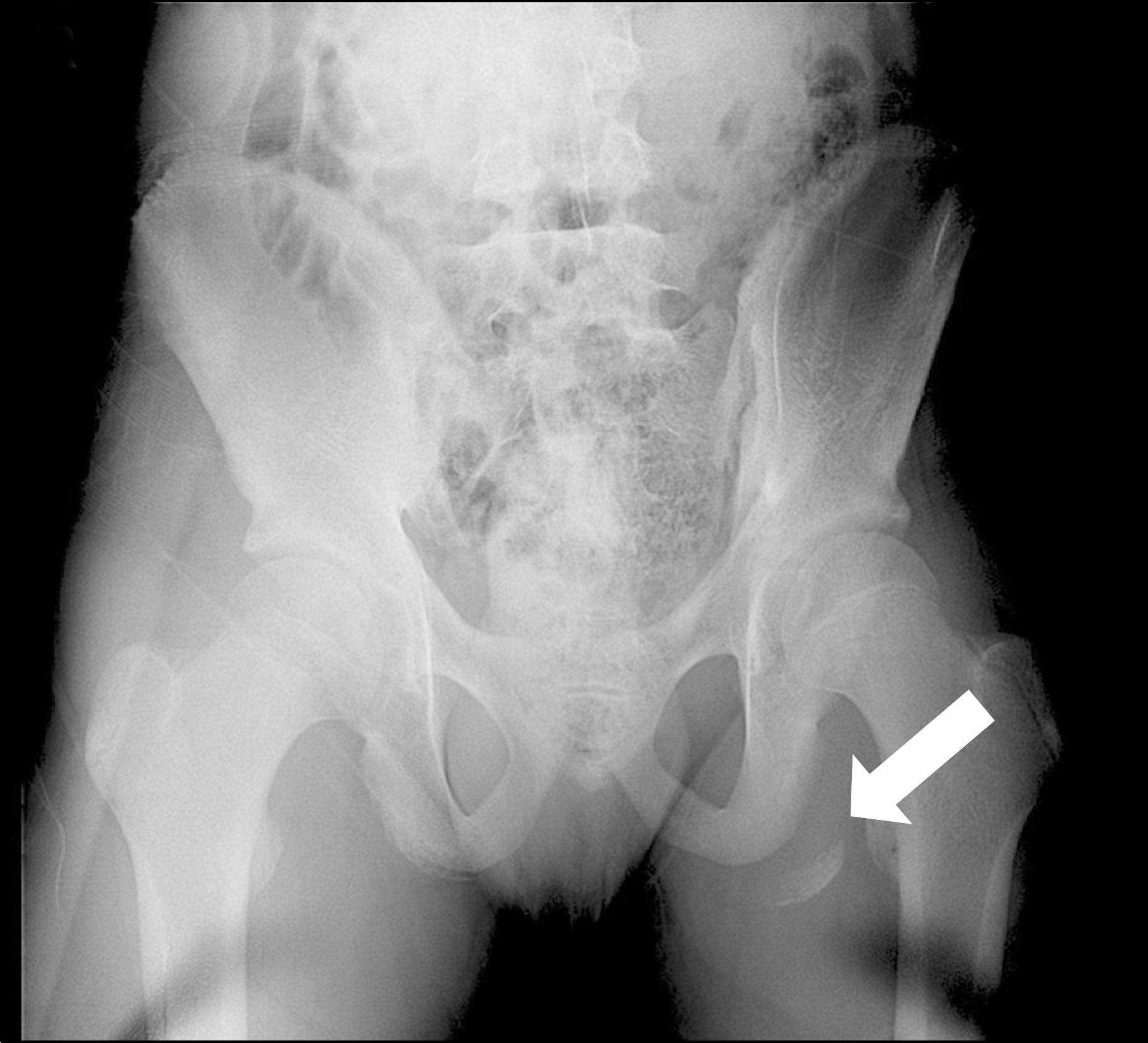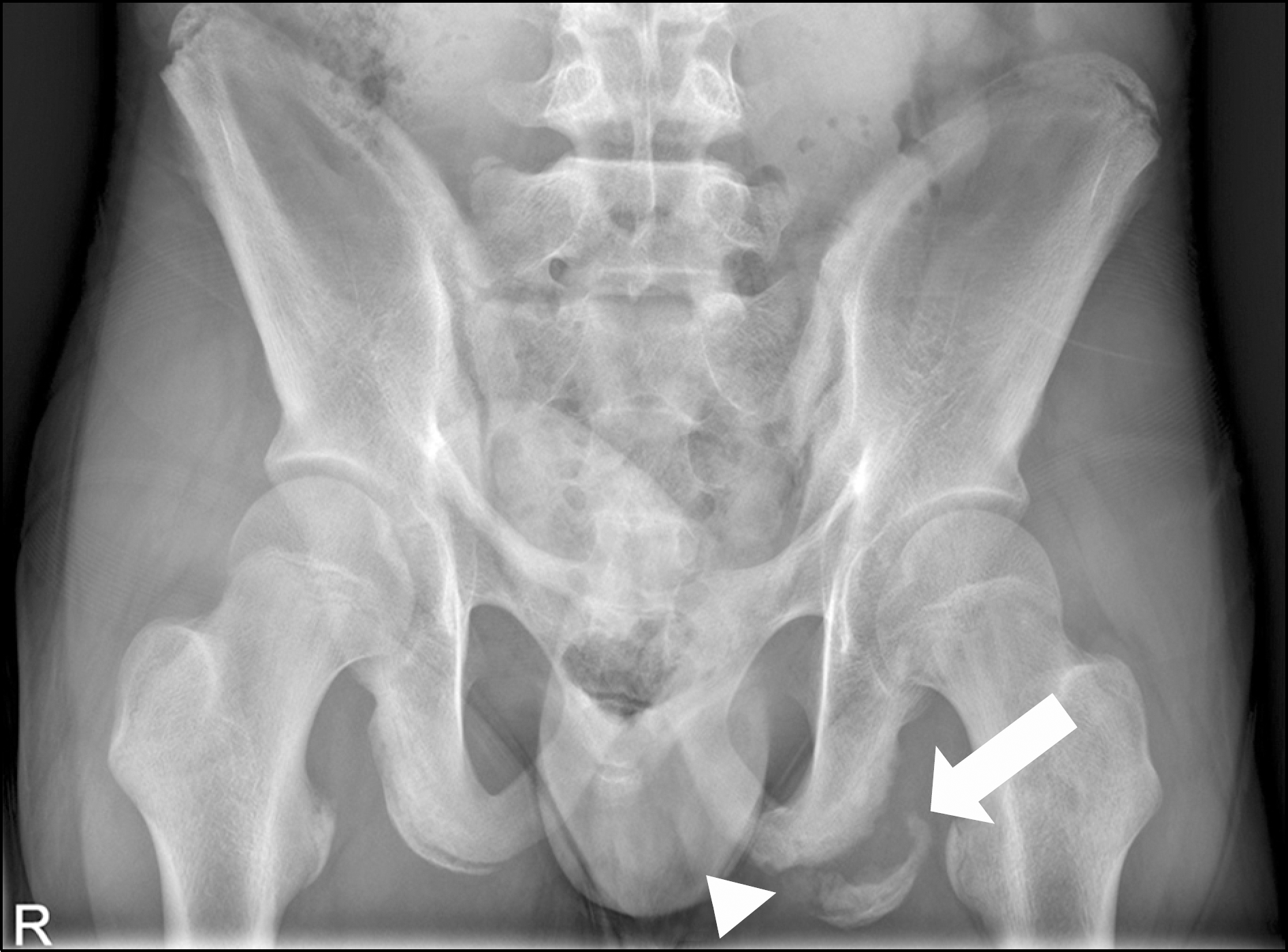Abstract
The incidence of avulsion fracture of ischial tuberosity is reported to present in 1.4%−4% of hamstring injuries. The injury mechanism is known to be caused by a sudden forceful hip flexion in the extended knee with eccentric load to the hamstrings. Although the majority of hamstring injuries are strains of the muscle, avulsion fracture of ischial tuberosity occurs rarely. In this report, a 13-year-old boy with avulsion fracture of ischial tuberosity is presented. Successful clinical outcome was achieved with careful conservative management. Previous literatures including operative indications are reviewed.
Go to : 
References
3. Greig M, Siegler JC. Soccer-specific fatigue and eccentric hamstrings muscle strength. J Athl Train. 2009; 44:180–4.

4. Sundar M, Carty H. Avulsion fractures of the pelvis in children: a report of 32 fractures and their outcome. Skeletal Radiol. 1994; 23:85–90.

5. Lee MJ, Reid SL, Elliott BC, Lloyd DG. Running biomechanics and lower limb strength associated with prior hamstring injury. Med Sci Sports Exerc. 2009; 41:1942–51.

6. Ferlic PW, Sadoghi P, Singer G, Kraus T, Eberl R. Treatment for ischial tuberosity avulsion fractures in adolescent athletes. Knee Surg Sports Traumatol Arthrosc. 2014; 22:893–7.

7. Akova B, Okay E. Avulsion of the ischial tuberosity in a young soccer player: six years follow-up. J Sports Sci Med. 2002; 1:27–30.
8. Wootton JR, Cross MJ, Holt KW. Avulsion of the ischial apophysis: the case for open reduction and internal fixation. J Bone Joint Surg Br. 1990; 72:625–7.

9. Sarimo J, Lempainen L, Mattila K, Orava S. Complete proximal hamstring avulsions: a series of 41 patients with operative treatment. Am J Sports Med. 2008; 36:1110–5.
Go to : 
 | Fig. 1.Pelvis outlet radiograph showing avulsion fracture of ischial tuberosity with fragment displacement of 1.5 cm (arrow). |
 | Fig. 2.(A) Coronal bone window computed tomography showing the 5.0×30.0×5.0 mm sized bony fragment which shaped crescentic (arrow). (B) Axial bony window computed tomography showing the bony fragment displaced inferiorly and laterally (arrowhead). |
 | Fig. 3.(A) Coronal T2-weighted magnetic resonance image showing displacement of left ischial tuberosity with partial tear of hamstring tendon (arrow). (B) Axial T2-weighted magnetic resonance image showing apophyseal avulsion of ischial tuberosity and acute strain in adductor magnus muscle (arrowhead). |




 PDF
PDF ePub
ePub Citation
Citation Print
Print



 XML Download
XML Download